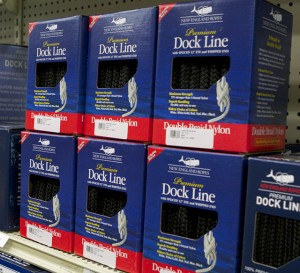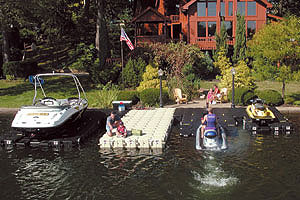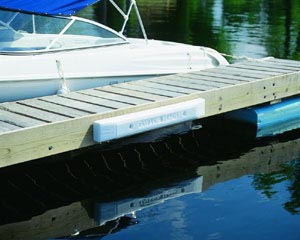Dock Lines 101: How to Choose and Use
The basics in selecting the right type, length, and number of dock lines for your boat.
Maybe the idea of talking about dock lines seems, well, basic. But the truth of the matter is that many boaters not only carry around the wrong types of line for docking, but don’t maintain a proper inventory for their boat, either. Sure, having the proper complement of dock lines aboard might not seem much like a safety issue, but you never know when you’ll have to tie your pride and joy up in a strange slip a long way from home. With that in mind, let’s take a look at not only what material your dock lines should be made of, but how many and what lengths you should have aboard at all times.

Dock lines are available in pre-spliced kits like this and come with a loop already spliced in one end for fast tie-ups.
First things first—let’s talk materials. The best material by far for dock lines is nylon, because it is stretchy and elastic, which allows it (not your boat’s deck hardware) to absorb sudden strains caused by wind, wakes, waves, and currents. This means less chance of hardware failure or structural damage to the boat and a nice, smooth ride while you’re tied up. When it comes time to pick out lines at your local marine shop, you’ll find that nylon dock lines come in two flavors—three-strand and braided.
Three-strand nylon looks like its name implies—there are many smaller filaments wound into three primary strands to form one solid line with a bumpy texture. It’s a good all-purpose choice for docking (and costs less), but it also can be more difficult to get around deck hardware such as cleats, chocks, and bits. It also tends to stiffen more quickly over time than braided nylon, which we’ll talk about next.

Three-strand nylon is a good choice for general docking maneuvers. Note the three primary strands woven into one solid line.
Braided nylon dock lines have an inner core and outer jacket with a smooth surface, and are generally stronger in terms of breaking strength than three-strand nylon lines. The reason many boaters choose braided dock lines, though, isn’t necessarily because of strength, but because they wrap around cleats and deck hardware more easily, stay supple longer, look nicer, and come in colors. Yes, some boaters are fashion conscious when it comes to their dock lines.
While many boaters like the array of colors Dacron sailing sheets (lines) are available in, Dacron really has no place on a boat for use as a dock line and you shouldn’t purchase or use lines made of this material for docking. While nylon is stretchy and elastic, Dacron is engineered not to stretch, so instead of absorbing a shock load from a passing boat’s wake or a stiff breeze, it transmits that energy right to your deck cleats, and subsequently to the boat, making for an uncomfortable ride in your slip.
In most marine supply stores, you can buy three-strand or braided nylon line right off the spool and tie in your own loops in the end, or you can buy pre-cut, pre-made “kits,” which have a loop already spliced in. The kits are obviously more expensive than buying the line off the spool, but they’re generally less than having a rigger custom make a set of dock lines from scratch.
Here’s the easy part—no matter how big or small your boat is (within reason), there’s a simple recipe for the lengths of dock lines you should have aboard at all times (your marine supply shop folks can help you size properly for the diameter you’ll need). Every boat should have two stern lines and two bow lines equal to the length of the boat aboard. This gives you flexibility in a variety of conditions. For spring lines, carry two lines equal to one 1.5 times the length of your boat. It’s that easy.
You’ll definitely take your dock lines for granted until you get into a situation where you don’t have enough for the slip you need to tie up in, or worse, when one breaks loose from wear. Inspecting and inventorying your dock line arsenal a couple of times a year—and making the necessary replacements—is a sure-fire way to keep yourself out of trouble when its time for dock and dine maneuvers.












